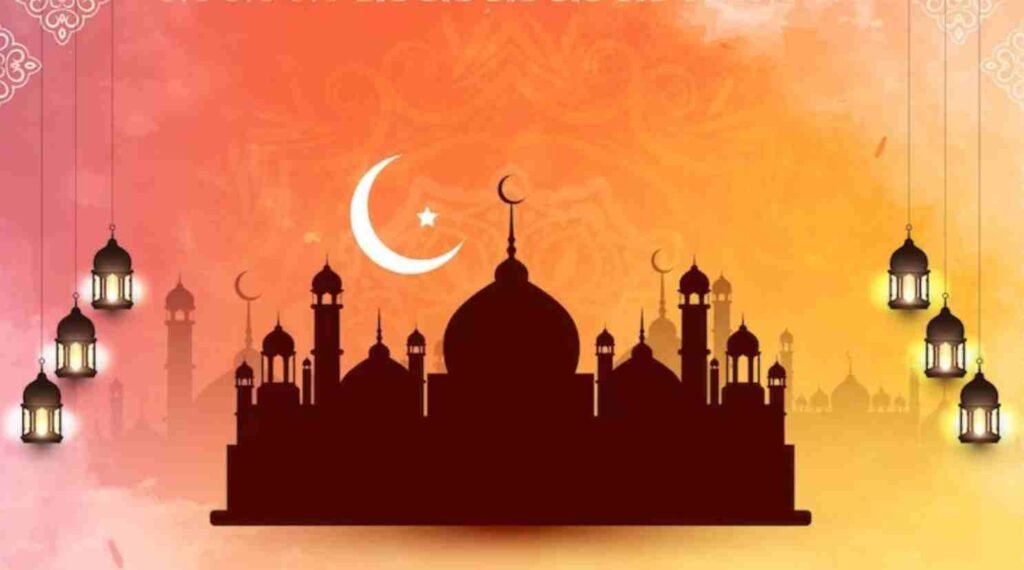Muslims around the world are preparing to celebrate one of the most important days in the Islamic calendar—Eid Al Adha, also known as the Festival of Sacrifice. This sacred day marks an event filled with deep meaning, generosity, and a strong sense of community.
Eid Al Adha falls on the 10th day of Dhul Hijjah, the final month of the Islamic lunar calendar. It follows the completion of Hajj, the annual pilgrimage to the holy city of Mecca in Saudi Arabia. While Hajj is only mandatory for those who are physically and financially able to make the journey, Eid Al Adha is celebrated by Muslims everywhere, no matter where they live.
The Story Behind the Festival
At the heart of Eid Al Adha is the story of Prophet Ibrahim (Abraham), who is highly respected in Islam, Christianity, and Judaism. According to Islamic belief, God (Allah) tested Prophet Ibrahim’s faith by commanding him to sacrifice his beloved son, Ismail.

Without hesitation, Ibrahim agreed to follow God’s command. But just as he was about to carry out the sacrifice, God intervened and replaced his son with a ram. This powerful moment symbolizes complete trust and submission to God’s will, and it is the foundation of Eid Al Adha.

To honor Ibrahim’s devotion, Muslims today offer animal sacrifices and distribute the meat to those in need.
How Eid Al Adha Is Celebrated
The day begins with a special prayer, performed in open areas, mosques, or prayer grounds. Men, women, and children wear their best clothes—often new or traditional attire—and gather early in the morning to perform the Eid prayer. The atmosphere is joyful, filled with greetings of “Eid Mubarak!” which means “Blessed Eid.”
After the prayers, families either go home or to designated places where the Qurbani (sacrifice) is performed. This typically involves the slaughter of a goat, sheep, cow, or camel, depending on regional preferences and affordability. In many cases, people donate money to charities or use services that carry out the sacrifice on their behalf, especially in urban areas.
The meat from the sacrificed animal is divided into three equal parts:
- One-third for the family
- One-third for relatives and friends
- One-third for the poor and those in need
This act of sharing highlights the festival’s core values—compassion, charity, and equality.
More Than Just a Festival
While the traditions of sacrifice and meat distribution are well-known, Eid Al Adha is about much more. It’s a time for reflection, spiritual growth, and reinforcing the bonds of family and community.
Muslims use this occasion to remember the importance of obedience to God, just like Prophet Ibrahim showed. It’s also a reminder to care for those who are struggling—whether they’re close relatives or complete strangers.
In many countries, local mosques and community centers organize food drives, meat distribution programs, and charity campaigns to make sure no one is left out during this time. Volunteers spend hours preparing food and handing out parcels to families who otherwise might not have a proper Eid meal.
Celebrations Around the World
Eid Al Adha is observed in different ways across countries and cultures, but the central themes remain the same. In countries like Saudi Arabia, Egypt, Pakistan, Turkey, Indonesia, and Nigeria, the day is marked by a public holiday, and entire cities come alive with celebrations.
In Saudi Arabia, pilgrims complete their Hajj rituals, including the symbolic stoning of the devil at Mina. In Pakistan and India, early morning prayers are followed by animal sacrifices and big family feasts. In Turkey, it’s known as Kurban Bayramı, where even those who live in cities make sure the meat reaches those in need.
In the United States, UK, and other Western countries, Muslims may attend prayer services in large parks or community halls and often rely on organizations to conduct the sacrifice overseas, where the meat is given to the needy in developing nations.
Despite the geographical differences, the message is the same everywhere: gratitude to God, compassion for others, and unity within the community.
Modern Challenges and Changing Traditions
In recent years, environmental concerns, urbanization, and health regulations have changed how people perform sacrifices. In many cities, governments have designated special slaughterhouses or organized systems to ensure humane and hygienic processes.
Some younger Muslims are also using this time to raise awareness about food security, animal welfare, and climate change. Many choose to donate money instead of performing a physical sacrifice, ensuring that the spirit of Eid Al Adha—helping those in need—remains alive in different forms.
Technology has also become part of the tradition. With the rise of online platforms, people can now donate or book sacrifices with just a few clicks. Services will carry out the Qurbani on your behalf and send you photos or updates, keeping you involved even from afar.
A Time to Reconnect
Eid Al Adha is also a time to reconnect—with family, with faith, and with community. After the prayer and Qurbani, families gather for feasts, storytelling, and laughter. Traditional dishes like biryani, kebabs, stews, and sweets are prepared in abundance.
Children often receive gifts or money (called Eidi), and families may visit each other throughout the day. For many, it’s not just a day—it’s several days of celebration, love, and togetherness.
Final Thoughts
Eid Al Adha is more than just a religious event—it’s a global celebration of faith, sacrifice, and unity. Whether it’s performed in a remote village, a big city, or online through a charity, the values behind it remain unchanged.
In a world filled with challenges, this day reminds people to hold on to hope, show kindness, and give generously—because sometimes, the biggest sacrifice is simply choosing to care for others.
Also read: Why the Islamic New Year Is More Than Just a Date on the Calendar













